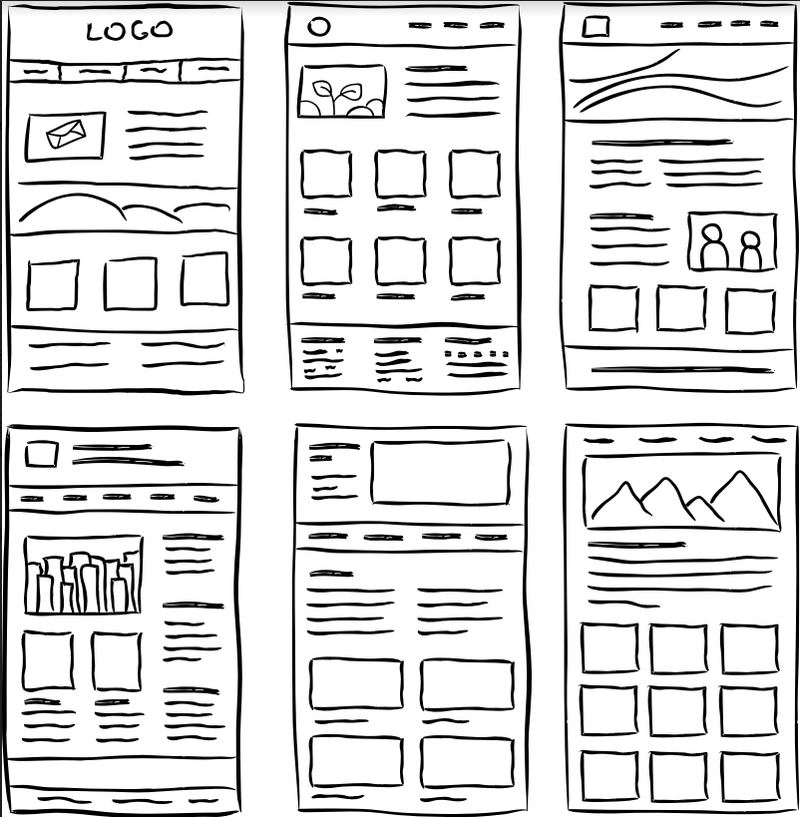
When it comes time to replatforming (the process of moving away from the existing eCommerce technology and utilising a new eCommerce technology), a rigorous planning process needs to be undertaken.
This planning process is meant to create amazing online experiences for targeted consumers. This process ensures the new digital channel is configured to serve consumers to the highest standard possible.
The other crucial reason why to adopt this rigorous planning comes in the form of identifying "experience issues" and not copying them over to the new eCommerce technology.
There are many reasons to replatform and move away from the existing eCommerce technology:
- It cannot adequately speak to business systems
- It does not have enough technology features to support the experiences needed to meet consumer expectations
- Its ability to render to small screens is limiting
- The existing vendors do not have the skill set to support the technology
The list goes on.
However, the common risk in replatforming is copying over specific experiences that do not add value to consumers when they have intent to purchase. This process extinguishes this risk by identifying the experience issues and creates a plan to remedy the issues on the new eCommerce technology.
There are 10 principles working together to create amazing online experiences, these principles are outlined in a book written by Greg Randall that can be found here.....
All 10 principles will be applied in this process to deliver success for the retailer.
What does a “Customer Experience Design plan” look like?
A retailer currently has an approach to digitally present products, content, brand material, and there is underlying functionality to enable it all. Consumers have their own preferences as to how they wish to engage with these products and content.
If the content is not presented to the consumer’s expectation, he/she has a bad experience.
The “customer experience design” process builds the alignment between a retailer’s presentation of products and content to how consumers want to engage with content.
As this alignment grows, so too does the sales performance of the digital channel.
What does the process look like?
Step 1: Understanding the wider business strategy
To ensure all customer experience plan creation and decision-making has alignment to the wider business, the customer experience design process needs to be in full alignment to business strategy.
The second part of this step is reviewing the business architecture to ensure there is an appreciation for information transfer and systems are working together in translating information. The standard of architecture influences the delivery of amazing online experiences to consumers.
The customer experience design process is not creating a new digital strategy. It is taking the business strategy and translating it into a digital version of itself. This is how alignment is built between business strategy, the digital strategy and the digital channel.
Step 2: Deep dive into the data
Comma Consulting will conduct a fact-finding mission to understand:
- What experiences customers enjoy when interacting with the retailer? We are looking to find what experiences are delivering great experiences and ensure this translates to the customer experience design plan.
- What customers do not like when engaging with the retailer? This is uncovering the pain points occurring when existing customer have intent to purchase a retailer’s product and are not currently being adequately addressed by the retailer’s digital channel.
- What consumers (not customers) do not like when engaging with the retailer? This is the process of uncovering the pain points the retailer is not addressing for those consumers who have not yet purchased from the retailer.
Meeting the needs of a market it could not previously satisfy drives customer the acquisition strategy.
Specific activities required in Step 2:
Deep analysis will be conducted from the following sources:
- Behavioural site analytics
- Customer service data (online chat records) and interviews with front line employees (sales people) and customer support teams
- Consumer demand data
Reasons why each of the above three are important:
Analysis Source #1 - Site Analytics:
Consumers vote with their actions. Site analytics is critical to uncover these actions and answers the “What” (what is happening). This source also provides insight into the “Why” (why is this happening).
Understanding the “What” focuses our attention on the “Why”. Answering the “Why” shapes the new customer experience design plan.
Analysis Source #2 - Customer service data and employee interviews:
Gaining a truer sense of consumer pain points comes primarily from these sources. The most accurate and clear representation of consumer pain points comes in the moment when buying intent is happening.
The definition of consumer “pain” is when they have intent, want to engage, and the site does not deliver on the consumer’s expectation. Some examples of expectations not being met....
- Insufficient product content
- Insufficient support content
- Completing a purchase is confusing
- The eCommerce functionality is behaving in an unconventional manner
- The layout and functionality treatment on the mobile version of the site makes it hard to find the right product
A recent study showed 64% of consumers reached out to customer support to assist them with an online or in store purchase. Because front line staff and call center staff are positioned on the front line, they are exposed to this pain daily.
To be effective in their roles, frontline staff are literally forced to construct solutions to deal with these consumer pain points. If they didn’t, no sales would be occurring. We are on the search for the pain and the employee activities required to resolve this pain.
Once we uncover the solutions needed to remove the pain, these are then digitally translated and fixed into the customer experience design plan. This is referred to as “value creation” in the 10 principles book written by Greg Randall.
Analysis Source #3 - Consumer Demand data:
Demand tools will be used to determine demand data for keywords that indicate intent for target markets the retailer wishes to align too.
This approach aligns to what Google calls “micro moments” and is a key principle to delivering amazing online experiences and a core part of new customer acquisition.
All the insights gathered within this step culminates in capturing the following information:
- All the issues found. These include all identified pain points.
- All recommendations. The recommendations explain how to overcome all identified “pain points”.
- New opportunities. This process always uncovers new opportunities. These are experiences the retailer will not be aware of which are currently working and assisting consumers in their decision making. These opportunities are captured and leveraged in the new experience design plan.
Step 3. Confirming Functional Requirements:
The insights gathered in Step 2 will identify a series of behaviours the digital channel must undertake to create amazing experiences. These “behaviours” are enabled by functionality and business architecture.
The purpose of this step is to confirm the front-end functionality and ensure the business architecture is in alignment to the customer experience design plan.
All “business requirements” gathered here assists with project costing but more importantly calls out what the business needs (in the context of technology functionality and integration work) in order to create amazing experiences.
Any contradictions to the plan will be called out.
Step 4. Wireframe Creation

This is the start of the visual translation of the customer experience design plan.
Wireframes are the first view of the visual presentation of the new page layouts for the site and is communicated in simple plain boxes without look, feel and brand DNA applied.
This is done intentionally to protect the experience design plan, reflect business strategy and eliminate the risk of subjective opinions influencing page layouts.
The wireframes will specifically represent….
- Strategic placement of functionality and the treatment of that functionality.
- Define page element hierarchy for all key page layouts for the different screen types.
- Introduces the first layer of best practice interaction cost management. This is the process of simplifying a consumer’s effort (see 10 principles book to learn more about how interaction cost managed contributes to creating amazing online experiences).
Important note: Wireframes are simultaneously created for desktop and smartphone screens. This ensures the integrity of the experience design plan across all screens.
Step 5. Document Creation
It is only once steps 1 through 4 are completed is a document created. The findings from the above four sources come together to form is a concise document written in “business speak” articulating what the customer experience design needs to look and behave like from the perspective of the consumer.
This IS the Customer Experience Design plan.
This document will produce the following outputs:
- Articulating core journeys necessary to capitalize on the “low hanging fruit” consumer demand.
- A narrative explaining all the recommendations that have come from insight gathering and how that influences functionality, wireframes, content etc….
- Providing detail of all core page layouts, this comes in the form of wireframes.
- Calls out all front facing eCommerce functionality required to activate and enable content and experiences.
- Explains the importance of the business systems required to support the delivery of amazing online experiences.
- Maps out the content strategy (value creation – see explanation below).
- The role business operations and the support function plays in contributing to amazing online experiences.
The document is created at this stage because this becomes a precise framework for design and development teams to work too.
There will be no ambiguity in what the pages need to look like (design) and how they are meant to behave (functionality). This enables design and build vendors to accurately cost the effort required to bring the plan to life.
Only once the document is approved can the design and build process commence.
Step 6. Applying Look/Feel and Brand DNA
The design team overlays the look/feel and brand DNA to all page layouts. This is where the customer experience design plan visually comes to life.
In this context, the customer experience design is fleshed out in more detail. Some examples of what becomes a key focus at this stage:
- Interaction cost management which leads to a high standard of usability.
- Defining and configuring how content and functionality will harmoniously work together.
- Ensuring the flow of pages seamlessly hang together to deliver experience continuity (consumer journeys).
This is why Comma Consulting works closely with all design/creative resource throughout the design process.
Once the designs are approved, they are sent to the development teams to connect the visual representation of the experience design plan to the eCommerce technology (and relevant business systems).
Comma Consulting oversees the conduct of the development teams to ensure the development of all designs are conducted to a high standard and in line with the plan.
Step 7. “Value Creation”
Another key output of the Customer Experience Design plan (from step 4.5) is the value creation (or content) plan. This is the content required to enhance a consumer’s journey.
This content informs consumers at the right place to simplify his/her decision making to help fulfil their need (or intent).
The Customer Experience Design plan not only calls out the content to be created, the plan also identifies at what stage of the journey this content is required.
Comma Consulting works closely with the retailer and resource in this content creation process which begins to gain momentum once the designs are approved.

In Conclusion...
The Customer Experience Design plan is created and successfully brought to life from the culmination of eight separate functions that must elegantly come together:
- Knowledge and clear understanding of business strategy and awareness of business architecture.
- Data. The insights gathered and recommendations created to lift experiences and remove pain points.
- Utilization of the right technology and/or functionality (there are instances where old/legacy software cannot support the plan).
- Wireframes. This is the visual representation of page layouts dictating page element placement and incorporates digital best practice.
- The Plan. The successful creation of the Customer Experience Design Plan.
- Design (comprising look/feel and Brand DNA). The design visually translates the wireframes and introduces a deeper layer of digital best practice.
- Build (development) and integration.
- Value creation. The content required to deliver the value to enhance experiences.
Consumer Interviews and Faking Intent:
It’s important to highlight why consumer interviews are NOT part of this process. As mentioned above, consumers vote with their actions when they are in the moment, and have a need to fulfill.
The true behaviour of the consumer occurs in that moment.
To ask a consumer to think back to a buying scenario and then ask how he/she would respond or react will deliver an inaccurate and false view of intent driven behaviours.
This underlies the importance of the employee interviews stated earlier. Due to their exposure to consumer behaviour, they know what the pain points look like.
It is impossible to replicate buying intent.
Agencies commonly apply a user research method of creating lab settings to monitor consumer behaviours. Imagine how a person would perform if placed in a lab setting and asked to purchase a product on a site with someone sitting nearby monitoring each move. Or a person is at home, asked to make a purchase, but they are aware their journey is being recorded.
Having this knowledge of being monitored will always influence and bias the consumer behaviour and the results of the research.
The fundamental issue with this approach to faking intent is, consumers are always asked to complete a task.
In real life, if the experience is poor, the consumer will immediately stop, leave the site and move on to a competitor. They will not endure a poor experience any longer then they need to.
The incorporation of consumer interviews clouds the customer experience design and will never contribute insights that will add value.
If you wish to learn more how this process will specifically influence your digital channel, do not hesitate by making contact.
This article was as tagged as Best Practice , Data Driven Decision Making , eCommerce Conversion Rate Optimisation , UX Design